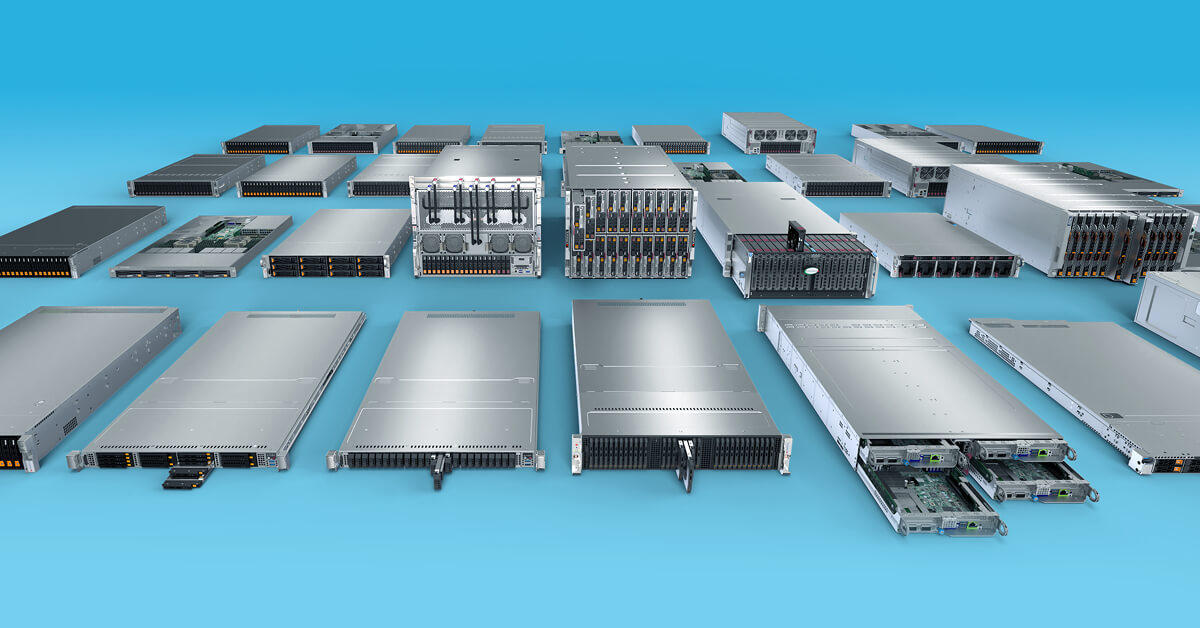Supermicro Future Direction Based on the Intel Processor Roadmap
Supermicro is a leader in designing, manufacturing, and delivering a range of servers that address a wide range of workloads. Intel is a valuable partner of Supermicro and has publicly laid out a roadmap demonstrating the evolution of the data center. From general purpose CPUs, the latest (4th and 5th Gen Intel® Xeon® Scalable processors) offerings fit perfectly to the Accelerate Everything direction of Supermicro. It is now possible to design silicon that accelerates specific workloads, resulting in multiples of performance for these applications.
Supermicro continues to design, develop, and introduce systems that support our customers' need for accelerated performance and energy efficiency based on the new 5th Gen Intel Xeon Scalable processors and beyond.
Overview
Intel has made public (summarized below) the general CPU roadmap for the next two years, with the 5th Gen Intel Xeon Scalable processors (formerly codenamed Emerald Rapids) with a stated availability in late 2023 and into 2024 and 2025. The following named products from Intel will be the Granite Rapids and Sierra Forest Xeon CPUs in 2024.
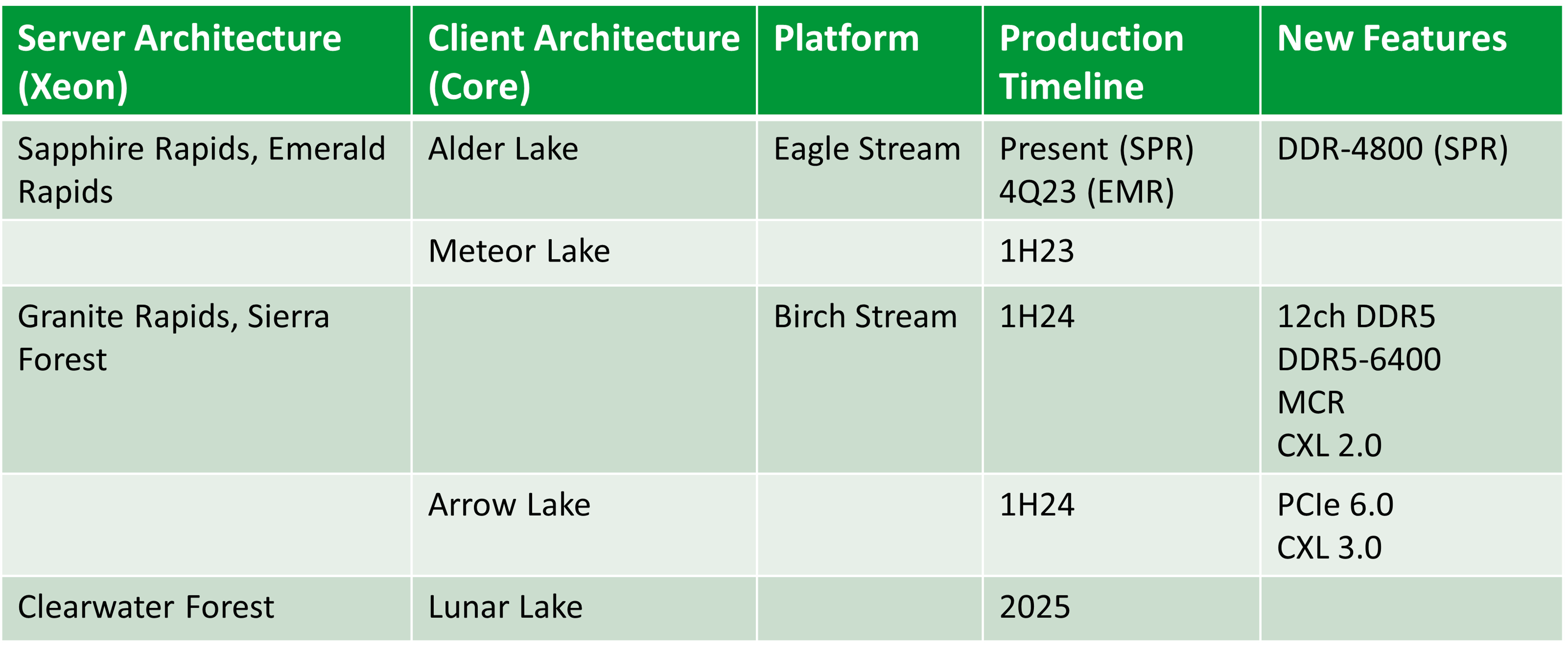
This "Birch Stream" platform for Granite Rapids and Sierra Forest utilizes modular system-on-chips (SoCs) for increased scalability and flexibility to deliver a range of products that meet the growing needs of a data center that must deliver results demanding customer workloads.
- A P-core is optimized for performance, while the E-core will be optimized for energy efficiency. One of the most exciting features of these new products is that two different types of cores will be offered, using the same socket, firmware, and OS software stack.
- Fastest DDR and new high-bandwidth multiplexed combined rank (MCR) DIMMs. Up to 12 channels DDR/MCR, 1-2 DPC. Overall, this is a 2.5x performance gain over the prior generation.
- New Intel Flat Memory enables hardware-managed data movement between DDR5 and CXL memory, making total capacity visible to software.
- CXL 2.0 support for all device types with backward compatibility to CXL 1.1.
- Advanced I/O with up to 136 PCIe 5.0/CXL 2.0 lanes and up to six UPI links (144 lanes).
- Scalable with one to eight sockets with the P-Core version and one to two sockets with the E-Core version.
The P-Core and E-Core CPUs are optimized for different workloads. The P-Core based CPU is designed for HPC, AI, and workloads that require the highest performance, while the E-Core CPU is designed for more for cloud-native and scale-out workloads where energy efficiency and performance per watt are more important. A comparison is shown below.
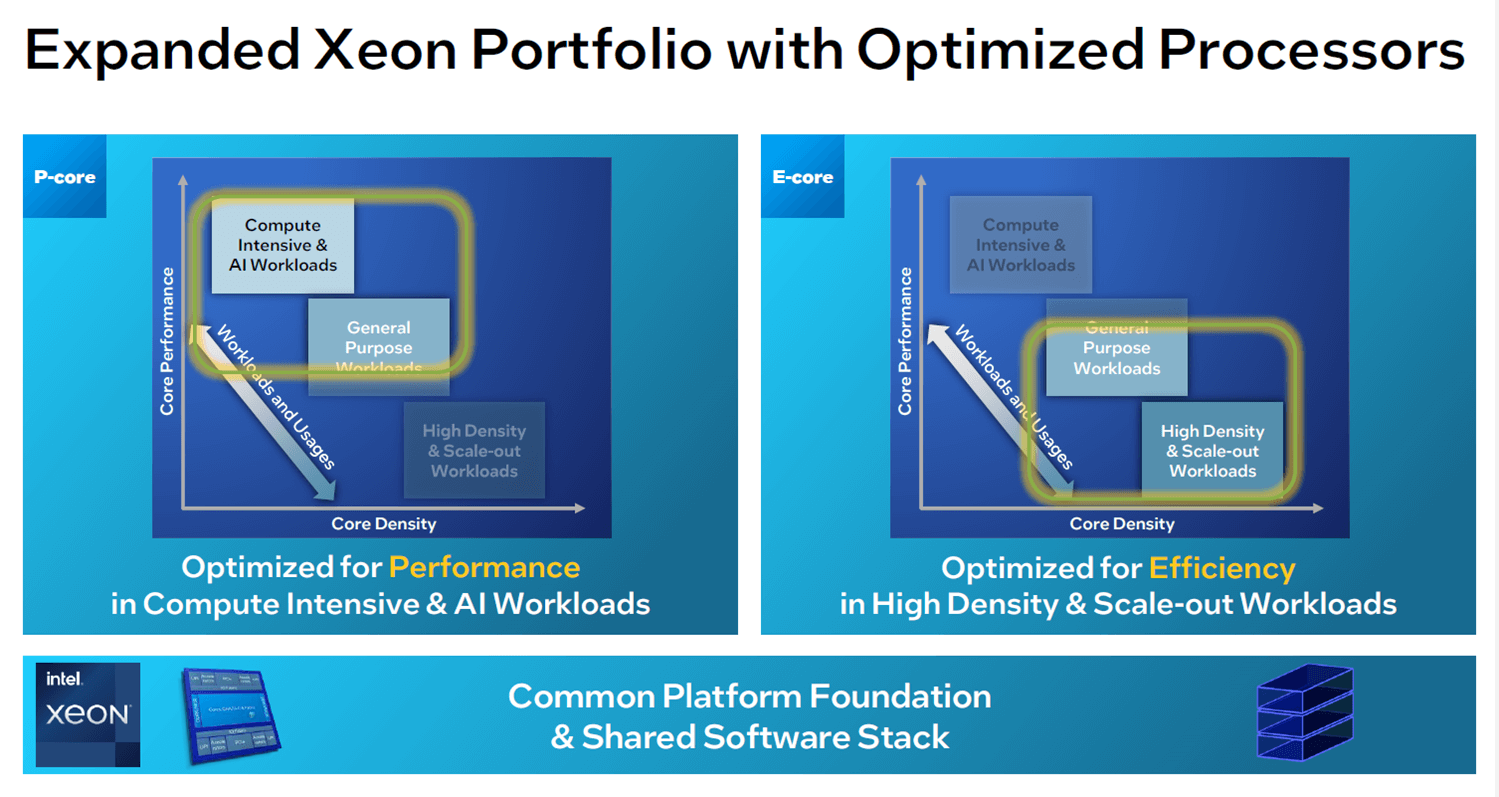
The Granite Rapids CPUs with P-Cores are expected to show 2-3x better performance for mixed AI workloads than the current Intel CPUs. There will be enhanced Intel® AMX support for new FP16 instructions, higher memory bandwidth, increased core count, and more cache for compute-intensive workloads.
The Sierra Forest CPUs' E-cores are expected to demonstrate 2.5x better rack density and 2.4x higher performance per watt compared to the current generation of Intel Xeon CPUs. The TDP per CPU will be as low as 205W, and up to 144 cores per CPU are expected. A modern instruction set with robust security, virtualization, and AVX with AI extensions will be included in the E-Core CPU and foundational memory RAS features such as machine check and data cache ECC.
Performance
Sierra Forest (E-Cores) is expected to provide 250% better rack density at similar or higher performance per vCPU than the current 4th Gen Intel Xeon Scalable processor.
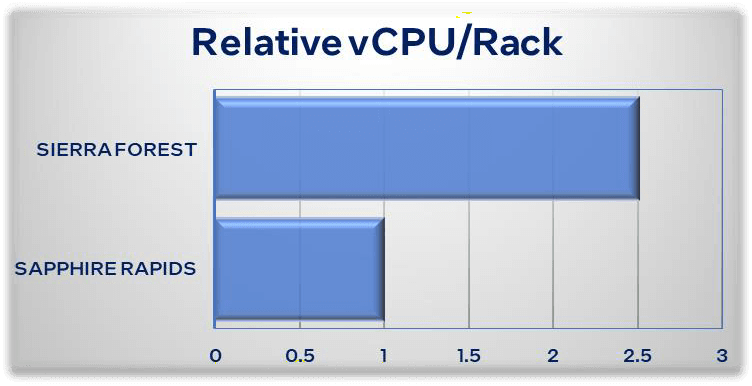
In addition, Sierra Forest should significantly improve the throughput performance per watt compared with current 4th Gen Xeon Intel processors, estimated to be about a 240% improvement.
Comparing the performance/watt and the performance/thread of today's 4th Gen Xeon Intel CPUs with Sierra Forest and Granite Rapids shows that Granite Rapids should have a very high performance per thread. At the same time, Sierra Forest excels at performance per watt.
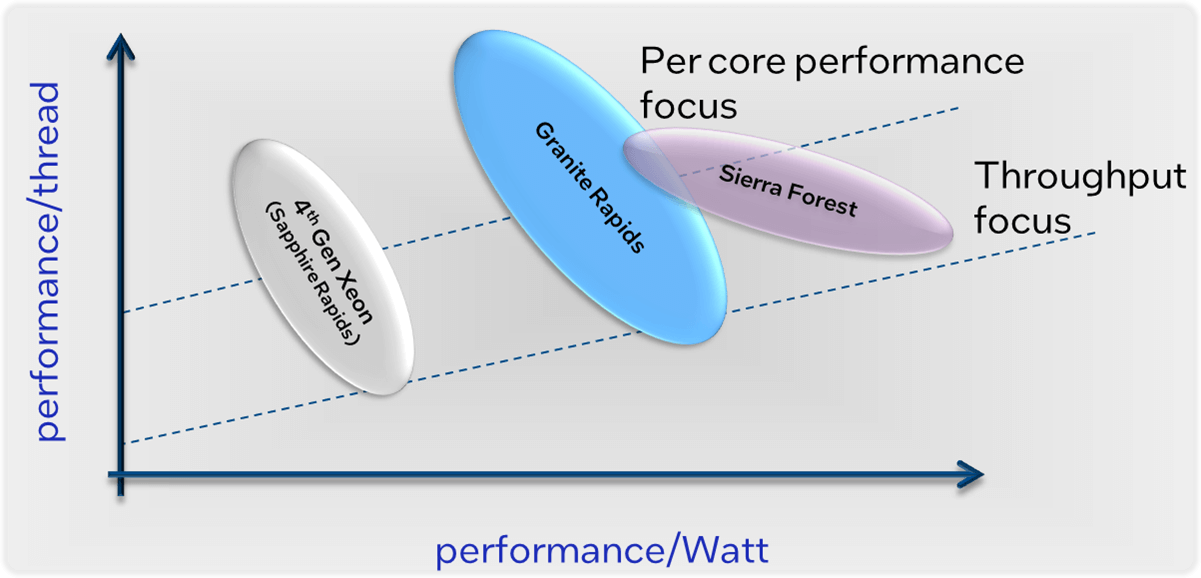
The Supermicro roadmap in the future is exciting and interesting, as Supermicro will support the bifurcated Intel strategy of providing one portfolio of processors customized for high performance. At the same time, the other product line will be optimized for energy efficiency and performance per watt.
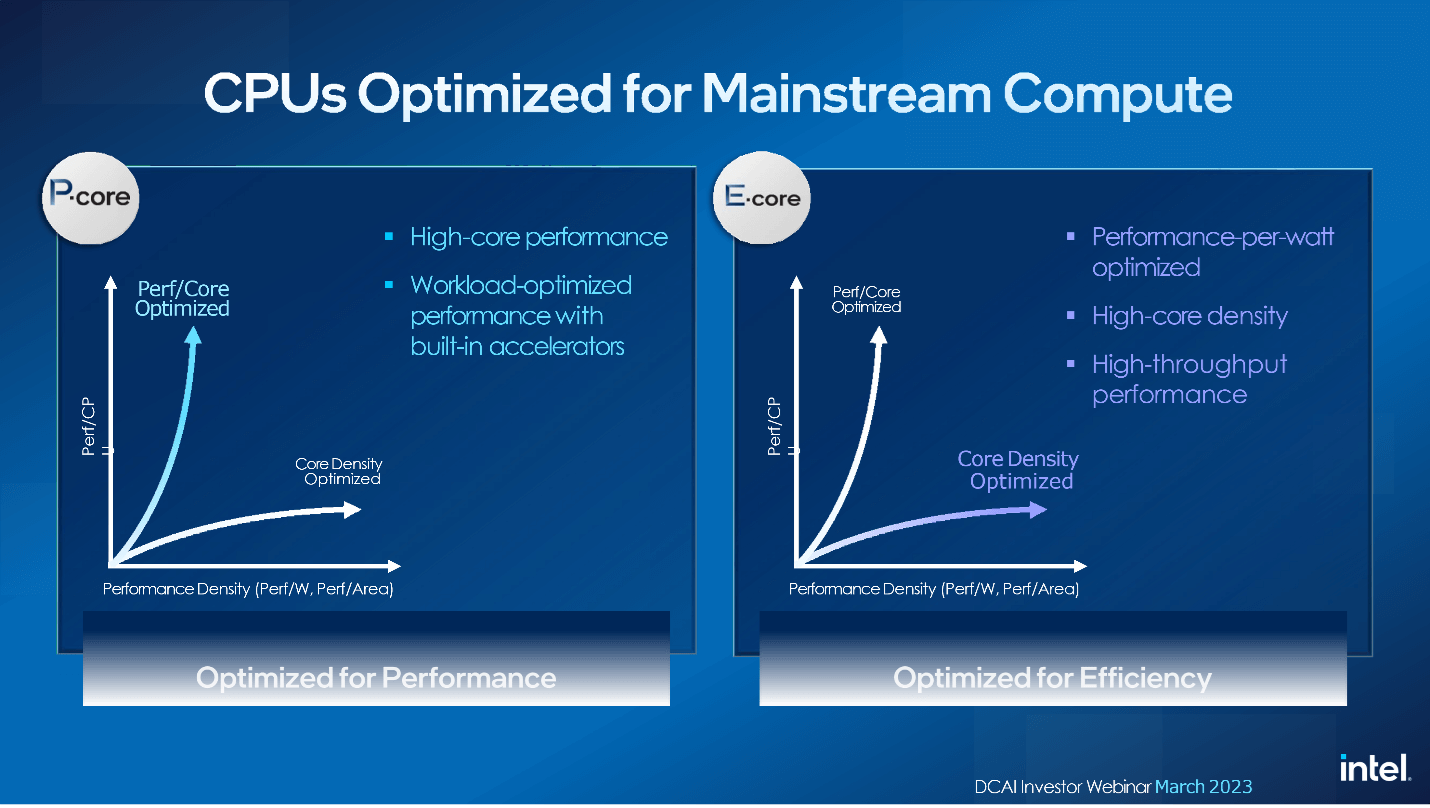
Summary
Intel continues to develop innovative new CPUs and has shared its roadmap for the next few years. Supermicro will incorporate these innovative designs into a wide range of configurations designed for edge to the data center based on workloads and power and cooling requirements.
